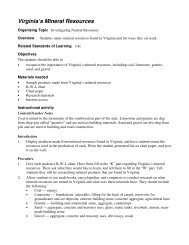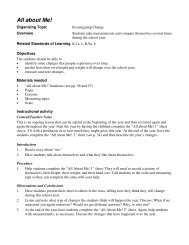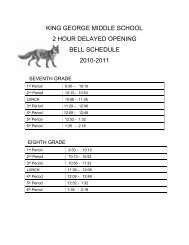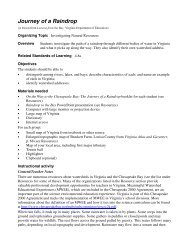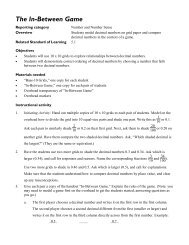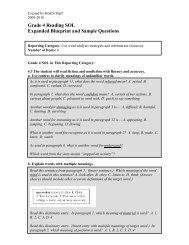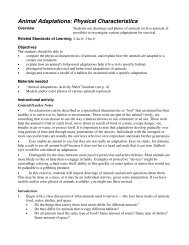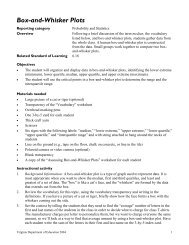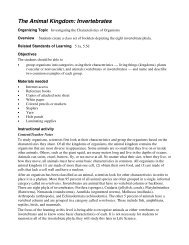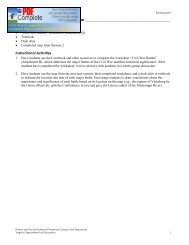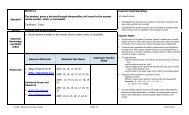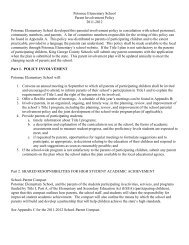Organizing Topic â Investigating the Five Senses
Organizing Topic â Investigating the Five Senses
Organizing Topic â Investigating the Five Senses
You also want an ePaper? Increase the reach of your titles
YUMPU automatically turns print PDFs into web optimized ePapers that Google loves.
The <strong>Five</strong> <strong>Senses</strong>: Touch<br />
<strong>Organizing</strong> <strong>Topic</strong><br />
Overview<br />
<strong>Investigating</strong> <strong>the</strong> <strong>Five</strong> <strong>Senses</strong><br />
Related Standards of Learning K.1a; K.2a, b; K.4c<br />
Objectives<br />
Students touch and feel a variety of objects that <strong>the</strong>y describe and<br />
compare.<br />
The student should be able to<br />
• observe <strong>the</strong> basic properties of objects, using <strong>the</strong>ir hands and sense of touch;<br />
• describe objects as rough, smooth, hard, soft, cold, and warm, by using <strong>the</strong>ir sense of touch;<br />
• relate <strong>the</strong>ir sense of touch to <strong>the</strong> sensory organs hands, fingers, and skin.<br />
Materials needed<br />
• Large plastic zip bags — one per student — containing one of each of <strong>the</strong> following objects:<br />
° Cotton balls<br />
° Plastic forks<br />
° Corrugated cardboards<br />
° Poster board squares<br />
° Felt squares<br />
° Socks<br />
° Sandpapers<br />
° Unifix cubes<br />
° Erasers<br />
° Blocks<br />
° Rocks<br />
• Paper plates to be used as “science mats”<br />
• Lunch-size paper bag — one per student — for follow-up and take-home activities<br />
Instructional activity<br />
Content/Teacher Notes<br />
We use our five senses to learn more about <strong>the</strong> world around us. Our hands and fingers do most of our<br />
feeling. The nerve endings in our hands and fingers send messages to our brain. These nerves tell our<br />
brain whe<strong>the</strong>r something is hot, cold, smooth, rough, sharp, dull, soft, and hard. Although we can “feel”<br />
with many parts of our body, our fingers are <strong>the</strong> most sensitive. Our feet are also more sensitive than<br />
o<strong>the</strong>r parts.<br />
Introduction<br />
1. Show students a brown bag containing a mystery object, e.g., a unifix cube, eraser, or block. Ask<br />
students: What’s inside? How could we figure out what’s inside without looking? What o<strong>the</strong>r clues<br />
would help. Brainstorm ideas. Conclude that TOUCHING would probably help <strong>the</strong> most, giving us<br />
<strong>the</strong> most information.<br />
2. Pass around <strong>the</strong> brown bag, and have children feel it and share what <strong>the</strong>y felt, using <strong>the</strong>se clues to<br />
make conjectures about what it might be. Then look and see what is inside.<br />
Virginia Department of Education<br />
8



